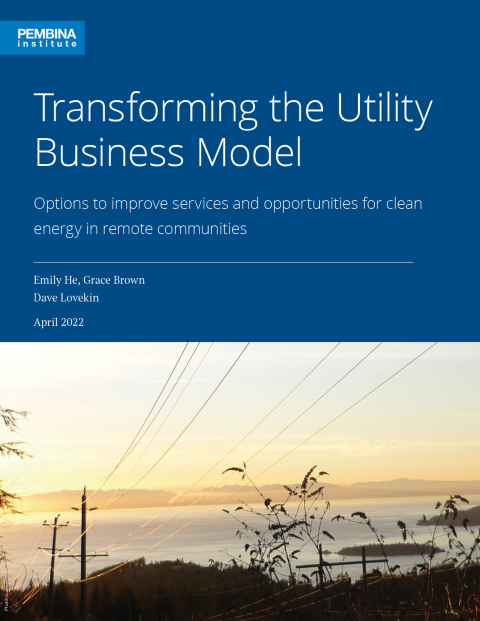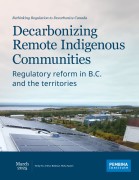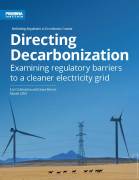Canada’s commitment to transitioning remote communities off diesel power is hampered by the way utilities operate in those areas. While the number of clean energy projects has increased, renewable energy and energy efficiency projects in remote communities are not being implemented at the speed and scale needed to meet provincial, territorial, and federal climate commitments. Indigenous energy proponents lack opportunities to implement projects, thus slowing clean energy deployment. Barriers to project development, such as regulations that fail to support renewable energy and energy efficiency deployment and pricing structures that favour diesel energy, are another impediment.
These barriers are embedded in the way utilities operate. Our report presents alternative business models that can be adopted by utilities in support of climate action goals and Indigenous-led clean energy projects.
We considered 16 alternatives to the conventional utility business model. Of those, four were identified as the best means of restructuring utilities servicing remote communities:
Performance Incentive Mechanisms (PIMs)
Through this option, regulators establish key performance indicators (KPIs) such as a KPI on the implementation of energy efficiency programs. If, for example, energy efficiency uptake exceeds or, conversely, does not meet the pre-determined business-as-usual threshold, revenue to the utility will increase or decline accordingly. Utilities are thus incentivized to improve environmental performance, level of customer satisfaction, or other actions as determined by the regulator-defined metrics.
Primary advantage: PIMs support alignment between utility operations and climate policy and can also support reconciliation goals if they are designed to reflect the community’s priorities.
Revenue Decoupling
Under this option, units of energy sold do not determine the revenue realized by the utility. Instead, rates charged to customers fluctuate to reflect actual sales volumes. A ceiling on rate increases can be imposed to minimize increases. Additionally, the amount of revenue that a utility is required to generate can be adjusted to reflect actual spending or other market influences.
Primary advantage: decoupling revenue from rates removes utility reluctance to support renewable energy and energy efficiency projects that would have reduced revenue under CoS, as a decline in energy sales no longer means lower revenues for utilities.
Total Expenditure Approach (TOTEX)
Through this option, utilities earn a return on capital and operating costs (currently, utilities only earn a return on capital costs), incentivizing utilities to choose the most economical option rather than prioritizing capital expenditures.
Primary advantage: after implementation of TOTEX, utilities can earn a return on Independent Power Producer (IPP) contracts, creating opportunities for Indigenous companies and communities to develop renewable energy projects.
Platform Service Revenues
This option allows utilities to serve as a “platform” operator for third-party energy service companies that can supply energy in addition to other energy-related services to customers, coordinating energy resources into the distribution system in exchange for fees that third parties pay the utility.
Primary advantage: Platform Service Revenues benefit the utility, third parties, and customers – utilities secure a new revenue stream, barriers to market entry are lowered for third parties, and customers get a greater range of services to choose from.










